Meet Ralph Ellison
Meet Ralph Ellison
African American novelist Ralph Waldo Ellison originally studied music and art but was drawn eventually to the world of literature. Ellison spent seven years writing Invisible Man (1952, National Book Award), and, although it was his only novel, it gained him a place as a respected American writer and remains one of the central texts of the twentieth-century canon.
Photography By David Attie
Ralph Ellison poses for a portrait
Harlem, New York, 1966
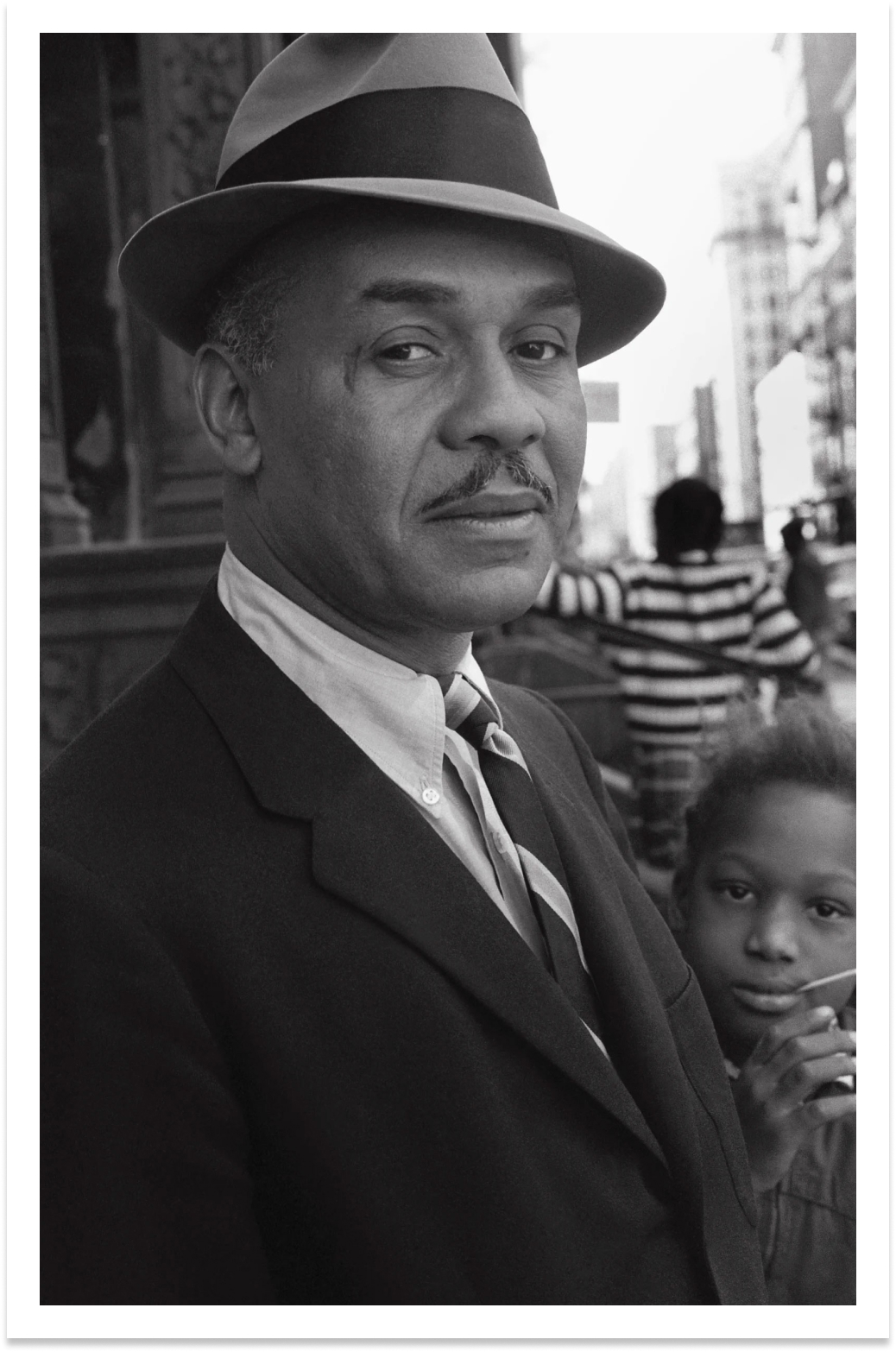
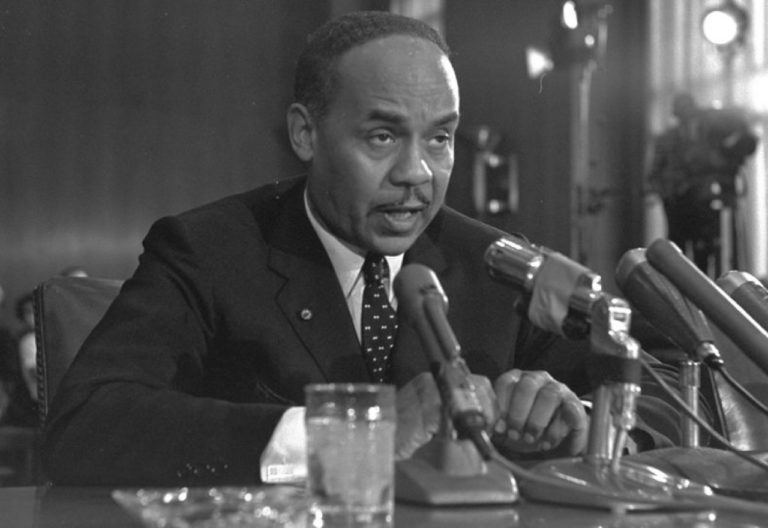
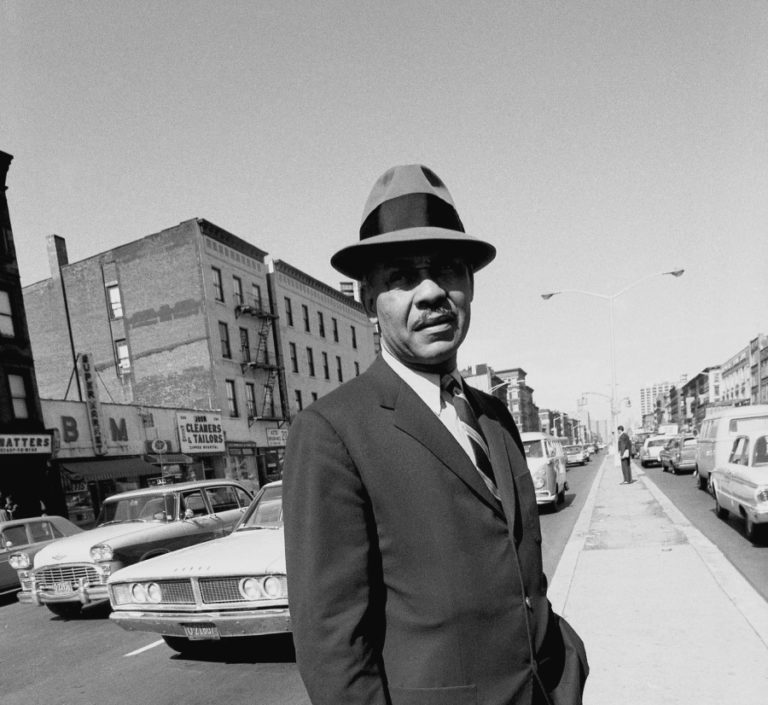
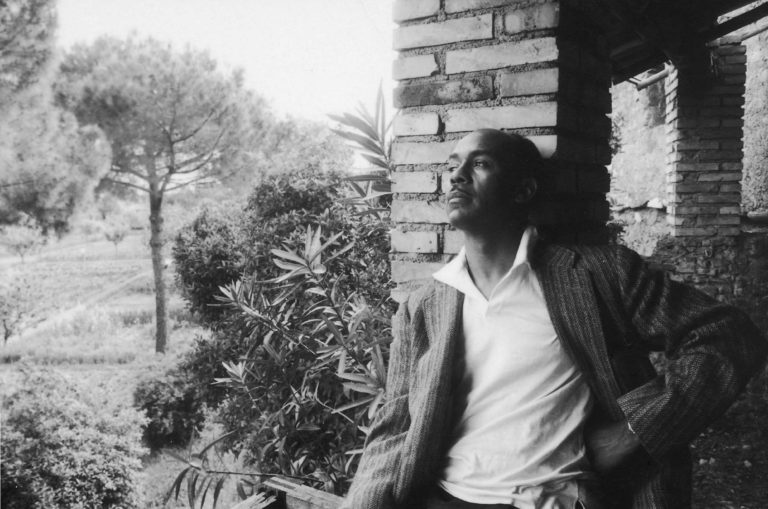
TIMELINE
March 1, 1913 – Ralph Ellison Born
Ralph Waldo Ellison is born in his family home at 405 First Street, Oklahoma City. His parents, Lewis Alfred Ellison and Ida Millsap Ellison, name their son after the 19th century American writer and philosopher Ralph Waldo Emerson. Scholars dispute the year of Ellison’s birth; some accounts place it one year later in 1914. His brother Herbert is born in 1916.
OKLAHOMA CITY, OKLAHOMA
July 19, 1916 – Father Passes
Working as an ice and coal deliveryman, Lewis Ellison falls while carrying a hundred-point block of ice down a flight of stairs. A shard of ice pierces his stomach, and the 39-year-old Ellison later dies from his injuries, leaving Ida to support her two young sons alone. Ida is forced to take on a number of jobs in order to support the family.
OKLAHOMA CITY, OKLAHOMA
1921 – Discovers Trumpet, Travels North
At the age of eight, Ellison begins learning the trumpet, which sparks a lifelong passion for the instrument and for jazz music. Later this year, Ida Ellison takes her boys to Gary, Indiana, to stay with her brother. On their return trip to Oklahoma City, the family stops in Tulsa to visit a cousin, and here young Ralph witnesses haunting scenes of the devastation resulting from the Greenwood Massacre and the destruction of the district known as “Black Wall Street.”
Gary, Indiana; Tulsa, Oklahoma
1932 – Graduates Douglass High School
Ellison graduates with honors from Douglass High School in Oklahoma City. At Douglass, Ellison played lead trumpet in the high school band and received musical instruction from Zelia Breaux, who he would later refer to her as like “a second mother” to him. In Deep Deuce’s thriving jazz clubs of the time, the young Ellison received a more informal education by listening to touring greats like Louis Armstrong, Duke Ellington and Count Basie as well as local legends like the Blue Devils and Jimmy Rushing.
OKLAHOMA CITY, OKLAHOMA
1933 – Arrives at Tuskegee
Ellison enrolls in the Tuskegee Institute, Booker T. Washington’s well-known African American university in Alabama, to study music. While there, he studies with Professor Morteza Drexel Sprague, arguably his most important teacher at Tuskegee. Professor Sprague exposes Ellison to currents in contemporary Black artistic thought as well as masterworks like T.S. Eliot’s The Waste Land, among others.
Tuskeegee, Alabama
1936 – Moves to New York
On summer break from Tuskegee and planning to earn money in the city to pay his final year of tuition, Ellison meets poet Langston Hughes on his first morning in Harlem. Deciding not to return to school as the summer ends, Ellison works a variety of jobs before meeting Richard Wright, who takes him under his wing and invites him to write a book review for his Marxist journal New Challenge. Wright also encourages Ellison to write “Hymie’s Bull,” his first short story.
New York City, New York
1937 – Heartbreak in Dayton
Pawning his trumpet for train fare to Dayton, Ohio, Ellison joins his mother on her deathbed. The Ellison brothers, devastated by her sudden passing, live semi-homelessly for a stretch in Dayton while Ellison writes several stories and part of an unfinished novel. He also studies the works of writers he admires like Dostoevsky, Hemingway, Joyce and Gertrude Stein. In March of 1938, he returns to New York to join Wright and others while working in the Works Progress Administration’s Federal Writers’ Project.
Dayton, Ohio
1938-41– Harlem Discoveries
In his work for the FWP, Ellison collects folk songs and stories from Harlem residents. He marries singer, dancer, and actress Rose Poindexter, and his book reviews—and soon articles--begin to appear regularly in the New Masses and other left-wing publications. His reputation as a writer grows, his first published piece of fiction appears (“Slick Gonna Learn”), and his friendship with Wright deepens as Ellison’s becomes the older writer’s chief advocate as his novel Native Son inspires controversy in Harlem’s literary and political circles.
Harlem, New york
1942-43 – Sudden Departures
After leaving the Federal Writers’ Project, Ellison becomes managing editor of the Negro Quarterly, writing most of the magazine’s editorials, though the publication folds one year later. After his marriage to Rose fails in September 1943, Ellison enlists in the Merchant Marine so he can “contribute to the war, but not be in a Jim Crow army.” He serves for two years as a cook.
New York City, New York
1944-45 – New Horizons
At sea, and while his ship is docked in Wales and London, Ellison works on three major stories he will finish once he returns stateside: “In a Strange Country,” “King of the Bingo Game,” and “Flying Home.” Back in Harlem, Ellison meets Fanny McConnell and, over dinner and conversation, the two fall in love and soon move in together. After his second Merchant Marine voyage in 1945 ends, he publishes the essay “Richard Wright’s Blues” to great acclaim, and the Rosenwald Fund grants Ellison a fellowship to complete a novel-in progress, a project he recognizes has stalled. After spontaneously writing the first sentence of what will become Invisible Man in a barn in Vermont, however, Ellison shifts his focus decisively.
London,United Kingdom, Harlem, New York, Vermont
1946-49 – Commitment
After Ralph and Fanny marry in August of 1946, Ellison settles into writing Invisible Man, a book that will ultimately take him seven years to complete. Aside from essays like “The Shadow and the Act” and “Harlem is Nowhere,” Ellison narrows his discipline exclusively to his novel. He publishes its first chapter to great acclaim in London and New York in late 1947 and early 1948, respectively.
Harlem, New york
1950-52 – Breakthrough
After years of work, Ellison finishes Invisible Man after cutting almost 200 pages from his manuscript. Random House publishes the novel in April of 1952 to mostly admiring reviews—among a few bitter denunciations by Marxist and Black nationalist reviewers—and it becomes an instant bestseller. Invisible Man eventually comes to be regarded as one of the most important American novels of the twentieth century.
London, United Kingdom; New York City, New York
1953-54 – Recognition
In 1953, Ellison receives the National Book Award. With his newfound fame, he lectures at historically Black colleges—including Tuskegee, where he never received his degree—and returns to Oklahoma City to reconnect with his roots. He publishes his classic essay “Twentieth Century Fiction and the Black Mask of Humanity” before traveling to Austria to teach and then to Spain. In 1955, the American Academy of Arts and Letters awards him the prestigious Prix de Rome, which includes a two-year fellowship abroad.
Oklahoma City, Oklahoma; Austria; Spain
1955-57 – Roman Holiday
The Ellisons travel to Rome. Interspersed with traveling the continent and attending several literary conferences, Ellison settles into his secluded writing studio and enjoys writing essays on jazz, resuming his prolific correspondence with letters to friends and colleagues, as well as beginning his second novel.
Rome, Italy
1958-60 – Return to New York
Moving back to New York City with Fanny, Ellison soon takes a two-year teaching position at Bard College, staying at the house of his friend Saul Bellow, who enthusiastically reads sections of Ellison’s new novel and pronounces it “every bit as good as Invisible Man.” Writings on jazz and critical essays continue, and a section of the new novel is published.
London, United Kingdom; New York City, New York
1961-66 — Academic Life, Shadow and Act, and Further Honors
Ellison becomes a visiting professor at the University of Chicago while publishing critical essays and further sections of his second novel. He and Fanny attend President Kennedy’s 1963 White House dinner honoring the centennial of the Emancipation Proclamation, not long before JFK is assassinated. Ellison’s collection of essays Shadow and Act is published in 1964 before Ellison begins a fellowship at Yale University. In 1965, a Book Week poll of writers and critics names Invisible Man the most enduring work of fiction published in the last 25 years. In 1966, Ellison is named an honorary consultant to the Library of Congress and receives an honorary doctorate from Rutgers University.
Oklahoma City, Oklahoma; Austria; Spain
1967 — Artistic Tragedy
In June, the Ellisons purchase and move into 250-year-old country house in Plainfield, Massachusetts. Ellison begins revising a significant portion of his second novel, believing its end is in sight. In November, the Ellisons return from running errands to see their house in flames. The house and everything in it is destroyed, including hundreds of pages of unpublished drafts and notes.
Rome, Italy
1968-70 — The Bitter with the Sweet
The Ellisons move into a large apartment in Harlem at 730 Riverside Drive, an address they will keep for the next 25 years. Mourning his lost work, Ellison struggles to regain his writing practice and momentum, even as President Johnson awards him the Presidential Medal of Freedom in 1969 and French minister of culture André Malraux—a former hero of Ellison’s—honors him with the Chevalier de l’Ordre des Arts et des Lettres. In 1970, he is appointed Albert Schweitzer Professor of the Humanities at New York University, a teaching position he will hold for the next decade while continuing to work on his long-delayed novel.
London, United Kingdom; New York City, New York
The Oklahoma Connection
Lorem ipsum dolor sit amet, consectetur adipiscing elit. Dignissim mattis eleifend leo cras euismod. Eu amet nec sed nullam pharetra, adipiscing. Euismod sed sagittis sed scelerisque. Dictumst odio egestas bibendum etiam faucibus blandit sodales amet eget. Lacus augue enim turpis nec in rhoncus diam sit tellus. Dictumst a, aliquet orci, aliquet. Cursus at mauris neque, ut lectus ultrices nisi, sed. Mi, eu senectus proin duis viverra gravida ullamcorper. Vestibulum a nunc etiam tortor dolor sagittis nulla tempus. Amet sed laoreet sit odio. Magna augue rhoncus quam hac ut ultrices.
March 1, 1913
Ralph Waldo Ellison is born in his family home at 405 First Street.
HARLEM, NEW YORK, 1966
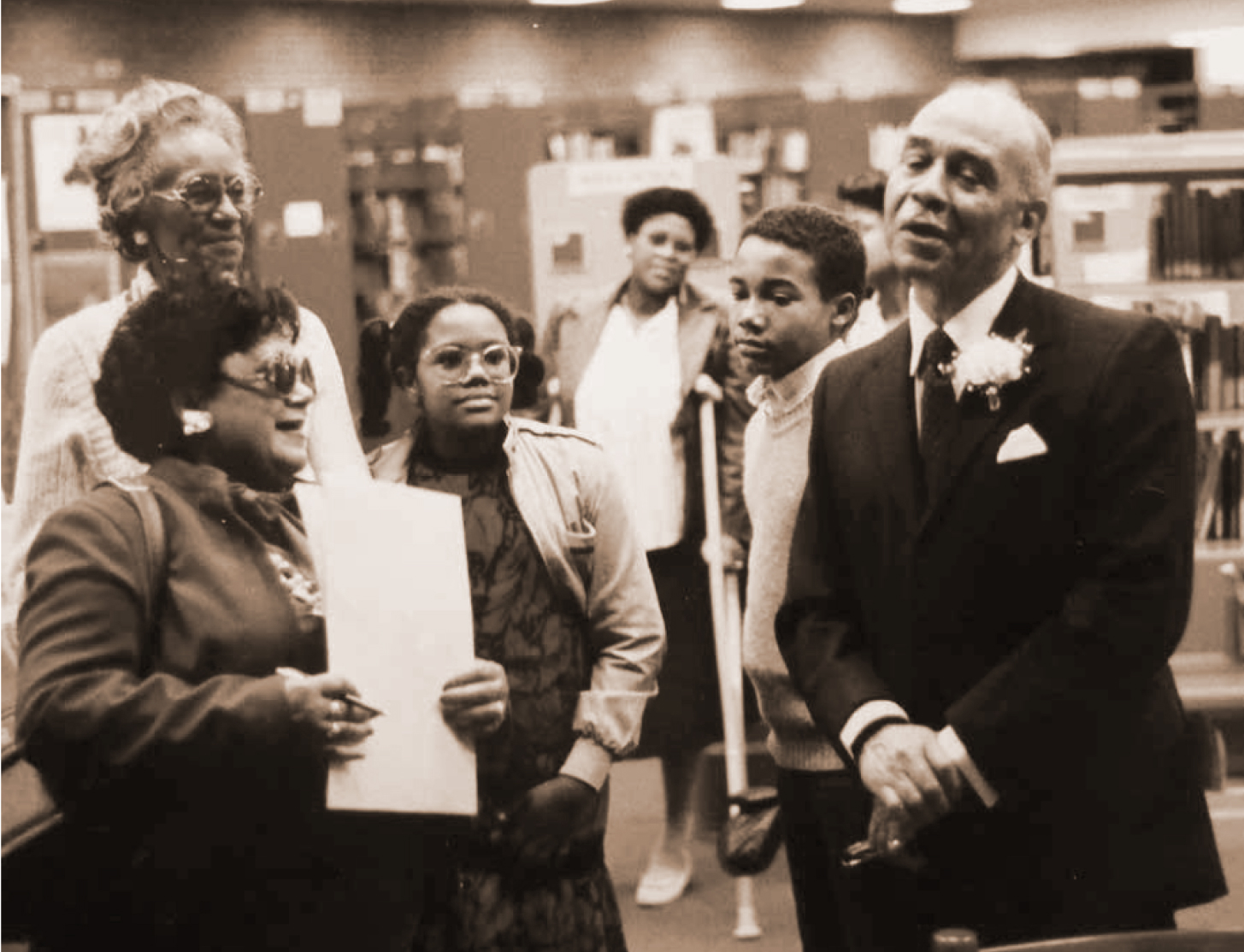
March 1, 1913
Ralph Waldo Ellison is born in his family home at 405 First Street.
HARLEM, NEW YORK, 1966
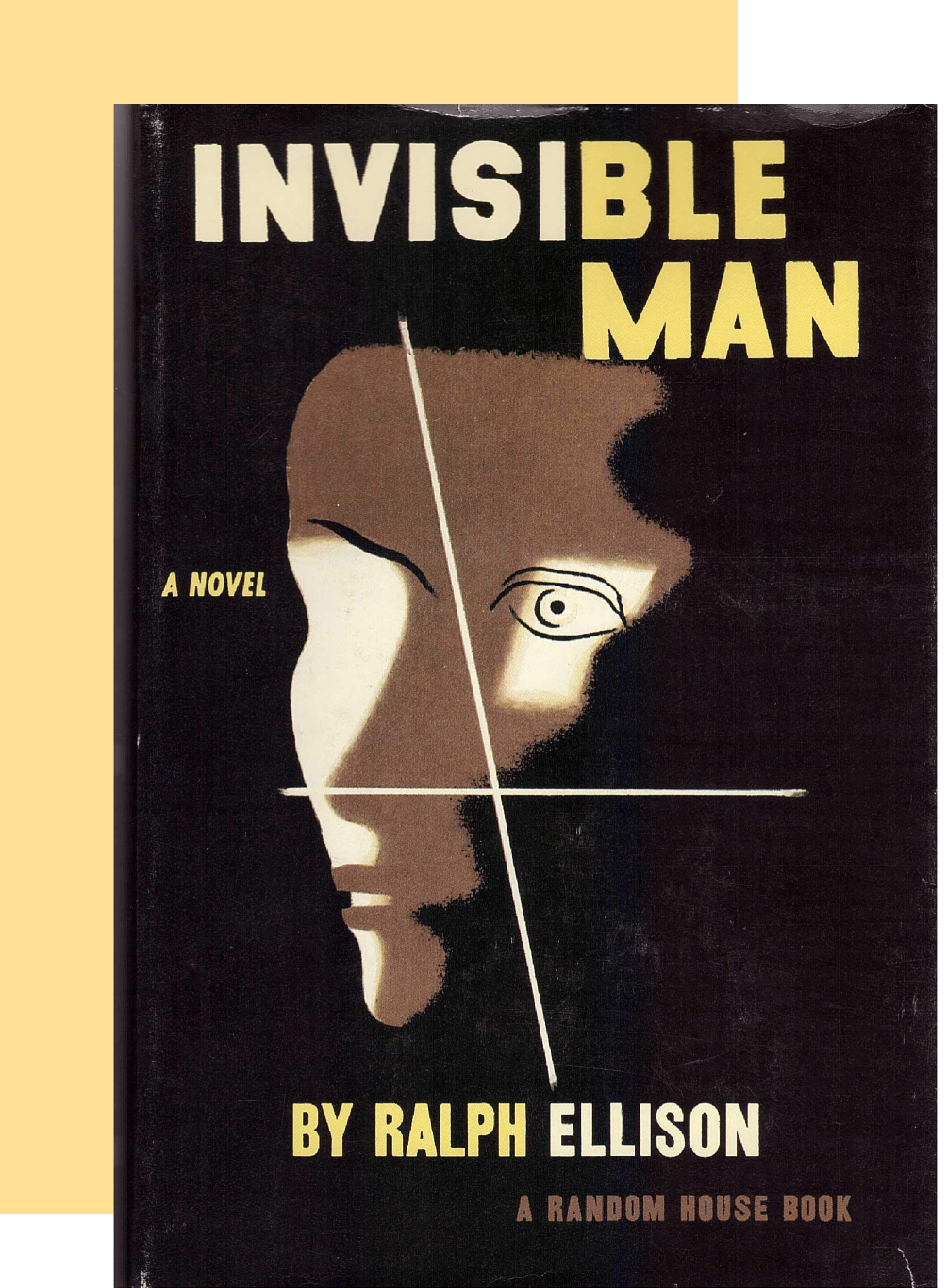
Jacket Design - E. McKnight Kauffer
Invisible Man First Edition
RANDOM HOUSE, NEW YORK, 1952
The Writer, The Man
Invisible Man is one of the most important and definitive novels in American literature. The novel centers on—and illuminates—the Black experience in America with clarity and wit. And in the years since its publication, Ralph Ellison’s classic has resonated across social and racial divides. The novel’s unnamed narrator is both relatable and mysterious, funny and unflinchingly honest, unafraid to grapple with the hardest parts of American life yet full of stubborn hope.
Since Invisible Man’s publication in 1952, America has undergone several major racial shifts—from the civil rights movement, to a perceived post-racial society and era of “color blindness,” to the most recent racial reckoning and movement toward justice across the nation. Ellison’s work remains essential, and its voice speaks to the realities of invisibility today as much as it did at the time of publication.
Jacket Design - E. McKnight Kauffer
Invisible Man First Edition
RANDOM HOUSE, NEW YORK, 1952
His work in Invisible Man walks a fine line between the particular and the universal, between one individual’s experience and the human experience as a whole. On one hand, Invisible Man is deeply and unapologetically Black, expressing ownership and representation of the Black experience. On the other hand, Ellison manages to tap into themes that encompass and illuminate humanity as a whole—themes of invisibility, displacement, and the companion struggles of grief and joy. In short, anyone who has felt invisible finds solace and solidarity on Invisible Man’s pages.
As long as there are those who are invisible in society and who have a voice and perspective to share, Invisible Man will remain a deeply held and esteemed work, American literature at its very best.
“ The novel is a full and authentic report of human experience. Ian Watt, The Rise of the Novel ”
International Impact of Invisible Man
Sit rhoncus lectus vulputate nisi pretium. Integer adipiscing quis feugiat imperdiet sed lorem vitae. Massa nulla sit mi dui duis ac. Lobortis est scelerisque at amet. Elementum, ac ipsum molestie arcu tristique eget proin. Morbi sollicitudin mauris mauris diam nunc, dui. Dictumst metus eget cursus mi fermentum purus, laoreet sed. Sapien, proin dignissim volutpat consequat, amet. Dui sed ut elit nisi. Quam sed non ut risus diam turpis placerat volutpat. Urna varius aliquam mauris amet, turpis arcu, morbi fermentum. Quis gravida sed sed sed.
Aenean dolor, eget ac dolor cras posuere fermentum aliquam in. Mattis nullam aliquet maecenas eleifend integer. Gravida ultrices enim purus quis. Et habitasse est porttitor elit sit. Diam, eu, quam volutpat mauris sit nunc risus donec. Scelerisque nisl cras netus at placerat tortor, nisl nunc a. Sit sodales quisque ipsum elit laoreet. Non facilisi proin ac condimentum ut est non. Fringilla nunc sit metus suscipit. Cursus sed libero, dui commodo, vel lacus pellentesque. Nam justo.
Japanese translation of Invisible Man
Translated by Fukuo Hashimoto
JAPAN TODAY
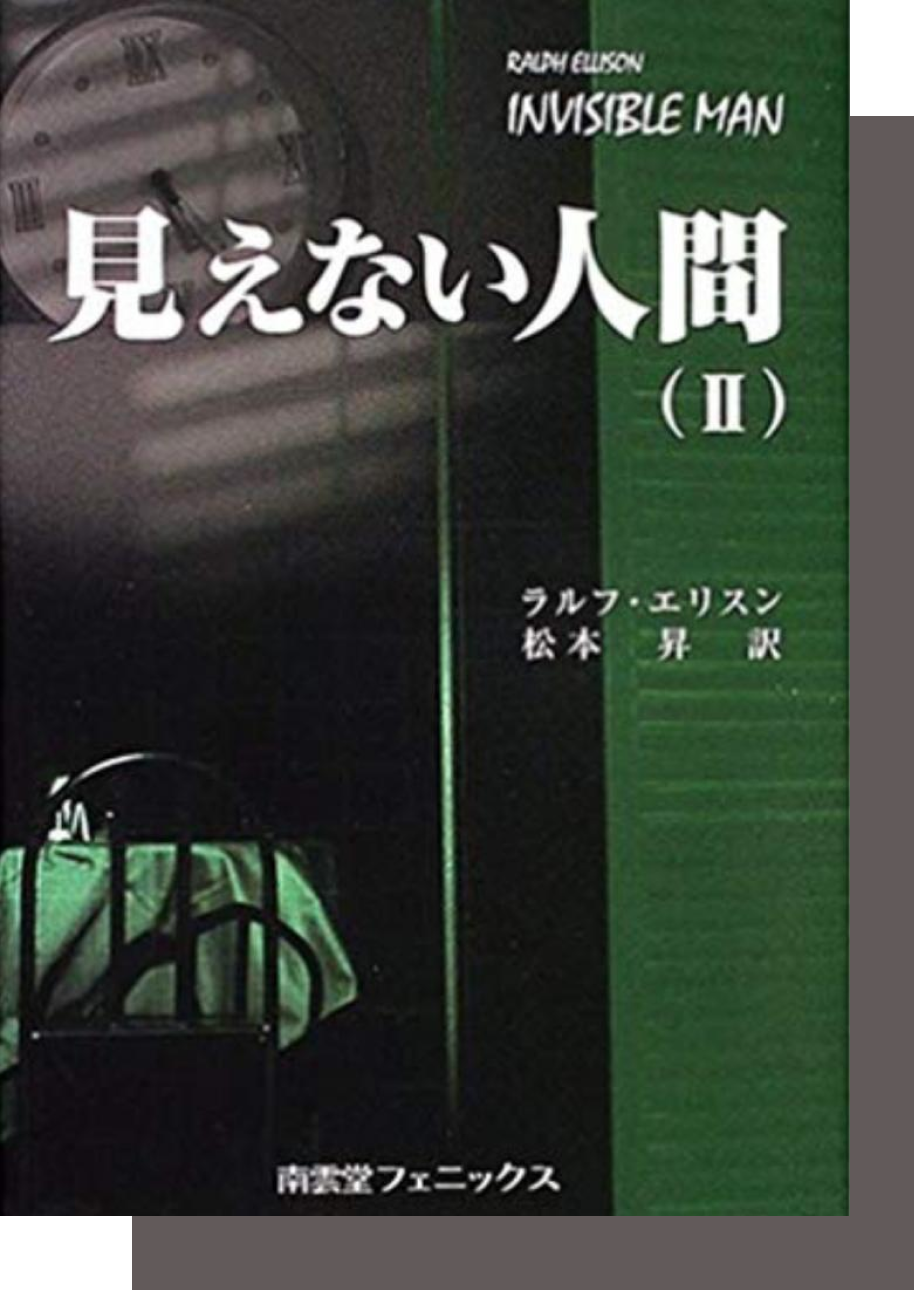
March 1, 1913
Ralph Waldo Ellison is born in his family home at 405 First Street.
HARLEM, NEW YORK, 1966
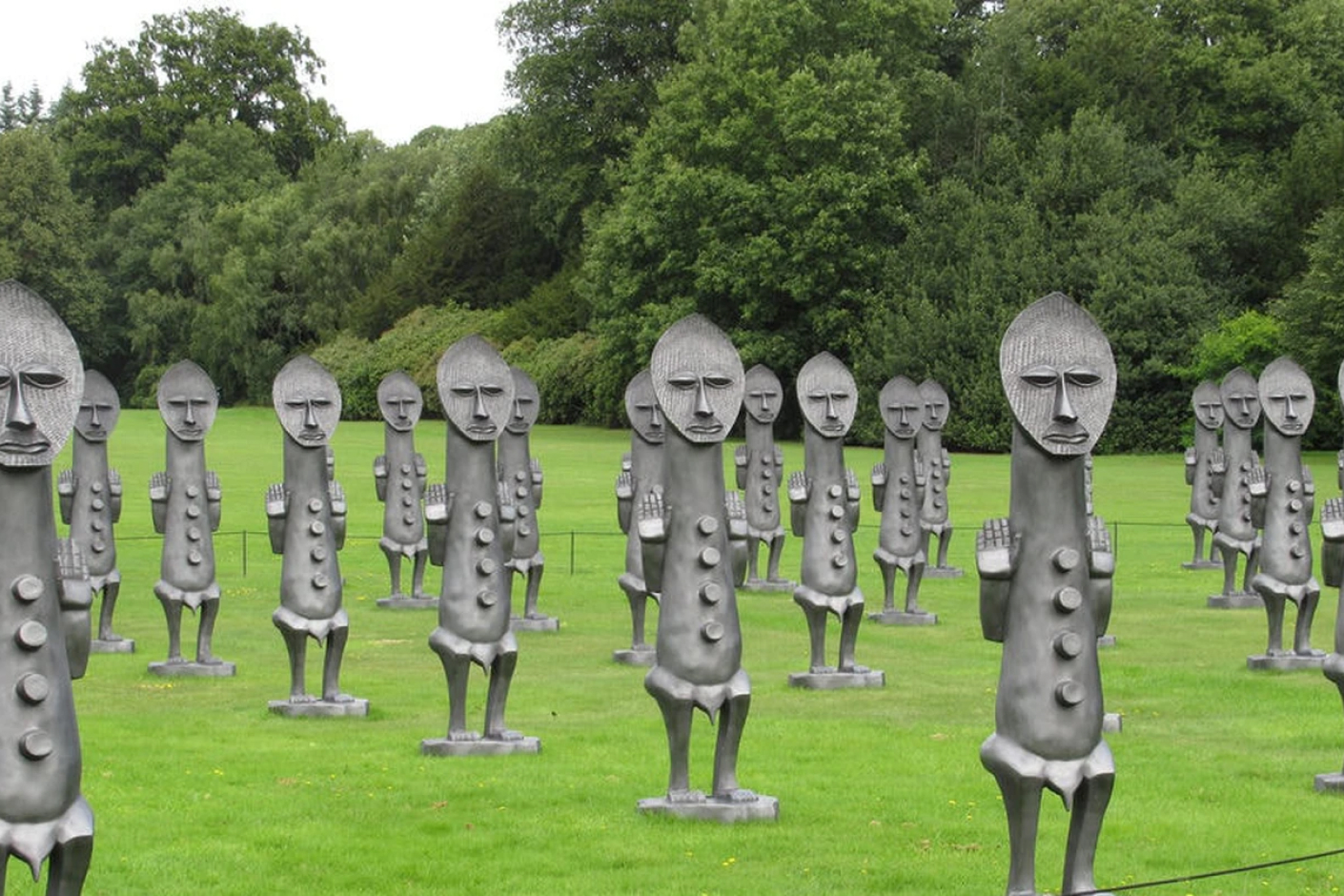
Japanese translation of Invisible Man
Translated by Fukuo Hashimoto
JAPAN TODAY
Japanese translation of Invisible Man
Translated by Fukuo Hashimoto
JAPAN TODAY
Sit rhoncus lectus vulputate nisi pretium. Integer adipiscing quis feugiat imperdiet sed lorem vitae. Massa nulla sit mi dui duis ac. Lobortis est scelerisque at amet. Elementum, ac ipsum molestie arcu tristique eget proin. Morbi sollicitudin mauris mauris diam nunc, dui. Dictumst metus eget cursus mi fermentum purus, laoreet sed. Sapien, proin dignissim volutpat consequat, amet. Dui sed ut elit nisi. Quam sed non ut risus diam turpis placerat volutpat. Urna varius aliquam mauris amet, turpis arcu, morbi fermentum. Quis gravida sed sed sed.
Sit rhoncus lectus vulputate nisi pretium. Integer adipiscing quis feugiat imperdiet sed lorem vitae. Massa nulla sit mi dui duis ac. Lobortis est scelerisque at amet. Elementum, ac ipsum molestie arcu tristique eget proin. Morbi sollicitudin mauris mauris diam nunc, dui. Dictumst metus eget cursus mi fermentum purus, laoreet sed. Sapien, proin dignissim volutpat consequat, amet. Dui sed ut elit nisi. Quam sed non ut risus diam turpis placerat volutpat. Urna varius aliquam mauris amet, turpis arcu, morbi fermentum. Quis gravida sed sed sed.
Resources for Teachers & Educators
We have gathered some resources for educators ranging from articles on how to teach the arts and literature to lesson plans and curriculum that delve into Ralph Ellison’s work. Click the link to view all resources.
